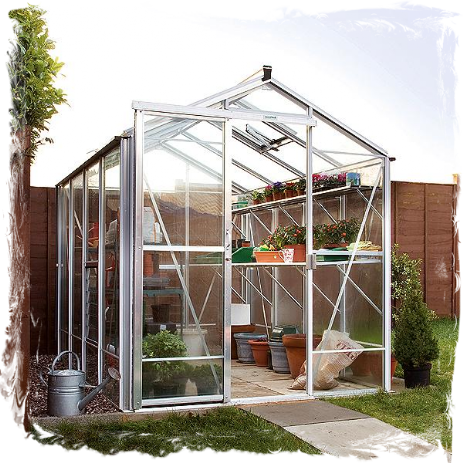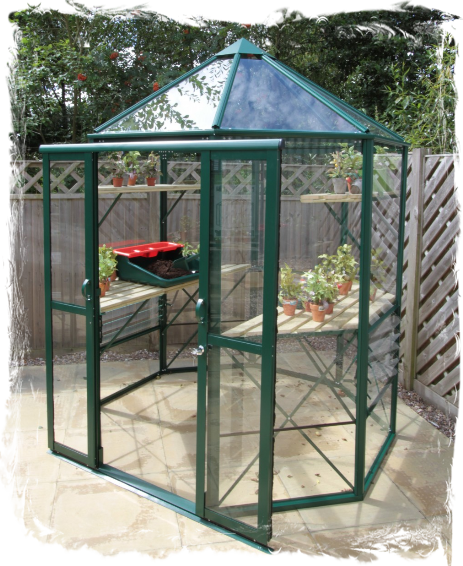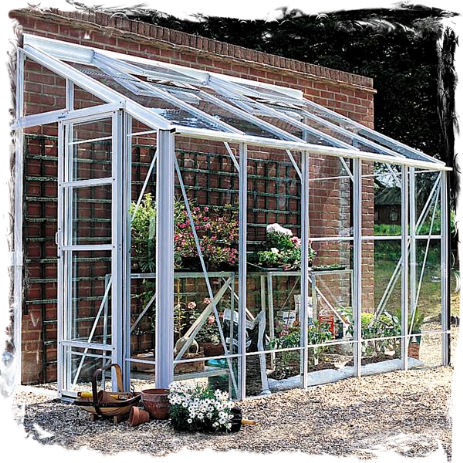> Things to Consider Before Purchasing Your New Greenhouse
- What space is available?
It is important to survey your garden and find the most appropriate place for your greenhouse, as this can make the difference between growing success and failure.
- Best position?
Because the most common sizes of greenhouses are virtually square, it makes little practical difference which way your position the building as long as one side has a south or southwest facing aspect for best exposure to sunlight.
If however space is not an issue and you can afford a lovely large greenhouse, it is best to line up the longest edge of the structure east-west, for best exposure to sunlight during the winter months.
- Do not site under trees.
Not only will this shade your greenhouse, which can encourage green algae to grow, leaves can block gutters and tree roots can also upset the foundations, as well as the risk of damage from fallen braches.
- Shelter from the wind.
It is a good idea to create a wind break by planting a hedge or putting up a fence; if there is not one already, as all greenhouses are vulnerable to damage during strong winds. Make sure to Close doors, vents and louvres in windy weather.
- Size.
When planning where your greenhouse can be sited, it is well to remember that the greenhouse is larger than the nominal size often stated.
They call an 8’ x 6’ greenhouse this for ease, but the reality is that the greenhouse will be a few inches larger, say 8’6” x 6’7”, this impacts on the size of the slab base required.
The base should also be at least 6 inches larger than the greenhouse, to allow the building to be securely fixed down to the slabs for safety.
There needs to be a minimum of 18” clearance around the greenhouse from all other buildings or obstacles, to allow the greenhouse fitter to install the greenhouse. This also allows you easy access to maintenance and cleaning of the building.
- Base.
The greenhouse needs to be built on solid level ground (level in all directions) so that stress is not transmitted through the frame to the glass, causing it to shatter.
If your garden is on a slope, you may need the ground building up or levelling; these costs should be included in your overall budget.
We recommend a concrete slab base as this allows water to freely drain between the gaps during watering or water ingress through vents.
PLEASE NOTE: No greenhouse is 100% waterproof.
- Types of Greenhouse.
There are basically 3 types of greenhouse and all are available in aluminium or timber and the aluminium buildings are also available in a choice of coloured powder-coated finishes. Check with suppliers for details.



Traditional Freestanding Greenhouse
Octagonal Greenhouse
Lean-to Greenhouse

